Month: February 2024

In April 1917, America’s armed forces were barely ready for a border skirmish with Mexican revolutionaries and bandits, much less the full-on slaughterhouse of the First World War. American small arms were excellent with the glaring exception of machine guns, of which the U.S. Army had very few. American military leaders had not yet learned the brutal lesson of the Great War for a new century: that automatic arms dominated the battlefield.
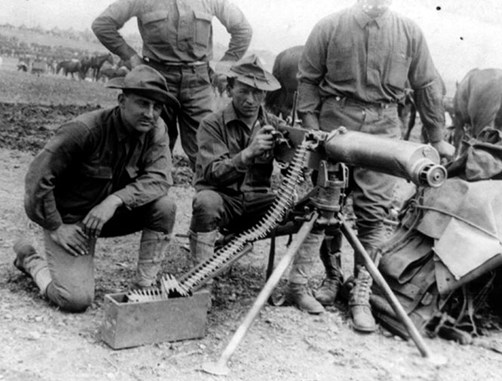
U.S. troops on the Mexican border with the Maxim Machine Gun, Caliber .30, Model of 1904. This was the first rifle-caliber heavy machine gun in U.S. Army service, however none of these guns were used by the AEF in France.
Just 18 months later, the situation had changed dramatically. At the end of World War I, American troops fielded the most complete and powerful set of infantry weapons the world had ever seen. By brave application of the force of arms coupled with our national design and manufacturing ingenuity, the United States transformed from a lesser Allied nation to an international superpower and world leader.

A wartime illustration depicting U.S. troops manning what looks like a cross between a British Vickers and an American Browning M1917 machine gun.
Here are a few of the machine guns in use by the American Expeditionary Force (AEF) in France:
The French “Fusil Mitrailleur Modele 1915 CSRG”, or Automatic Rifle, Model 1915 (Chauchat). Regardless of its official title, American troops called the less-than-reliable Chauchat many names that cannot be repeated here. The most widely manufactured automatic arm of World War I, the Chauchat was a good early concept for an automatic rifle, but quite poorly produced. The AEF used the Chauchat in large numbers, chambered in its original French 8 mm Lebel. Subsequent attempts to chamber the Chauchat in the U.S. .30-‘06 cartridge ended in disaster, with the guns essentially unusable and quickly withdrawn.

U.S. troops training with the French designed and built “Automatic Rifle, Model 1915 (Chauchat).” Widely despised by American troops for its shoddy construction and subsequent unreliability, the “damned, jammed Chauchat” still served American troops throughout the battles of 1918. Three American Chauchat gunners earned the Medal of Honor.
The French Hotchkiss M1914 Machine Gun served as the AEF’s primary heavy machine gun until the Browning M1917 machine gun became available later in 1918. The 8 mm Hotchkiss proved to be accurate, reliable and adaptable. It was initially fed with 24-round metal strips, and later in 1917 an articulated metal belt was adopted. Hotchkiss machine guns were widely used in the burgeoning anti-aircraft role, and were also installed in many of the FT-17 tanks that were operated by the American Tank Corps.
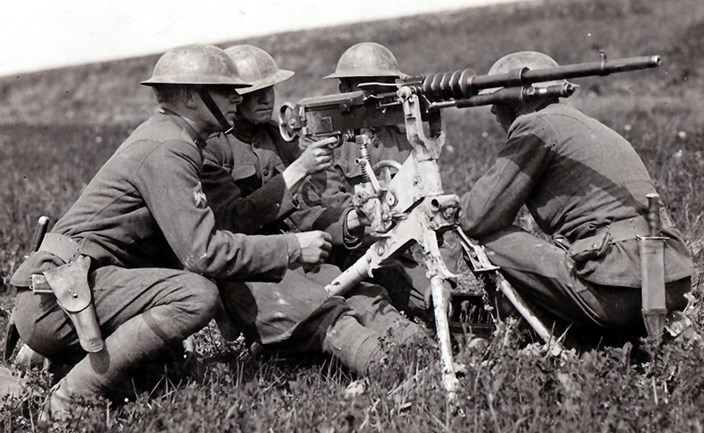
The most common heavy machine gun in the hands of the AEF was the French 8 mm M1914 Hotchkiss. Sturdy, heavy, reliable and adaptable, about 7,000 of them served with American forces in France.
British Automatic Arms: Two American divisions were attached to the British in the Somme area, and thus spent some time using the .303 cal. Lewis Light Machine Gun, the Hotchkiss Portative light machine gun, and the Vickers Machine Gun in combat during 1918.

Marines training at Quantico with a Lewis Gun during 1916. While the Lewis was very popular with the USMC, the Marines’ Lewis guns were taken away and replaced with the less reliable French Chauchat machine rifle.
Browning M1917 .30 cal. Machine Gun: About 1,200 of John Browning’s heavy water-cooled machine guns saw service during the last three months of World War I. Very quickly, the M1917’s reliability, accuracy and rate of fire became legendary. The water-cooled M1917 served with U.S. forces in World War I, between the wars, throughout World War II, the Korean War, until phased out of U.S. service in the late 1950s.
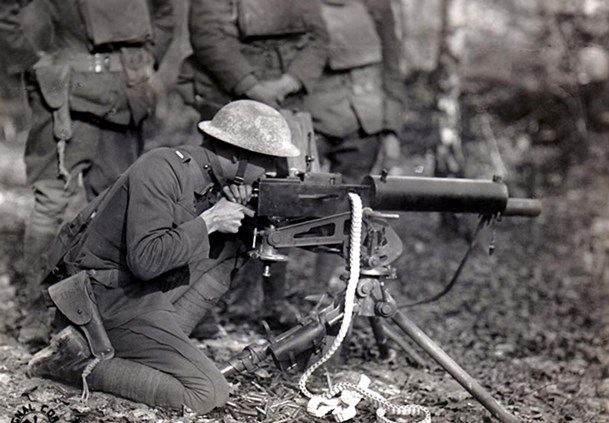
Val Browning (son of the designer, John Moses Browning) test fires one of his father’s incredible designs, the Browning M1917 .30 cal. heavy machine gun. Fielded late in the war, the M1917 nonetheless established a reputation for reliability and accuracy.

These men of the 80th Infantry Division were armed with a Browning M1917 machine gun, which featured a “beer can” flash hider.
Browning Automatic Rifle: John Browning’s genius automatic rifle design only saw service very late in the war, beginning in about mid-September 1918. Regardless, the BAR quickly proved to be the finest light automatic of the war, impressing enemies and allies alike. First World War BAR gunners were initially provided with a special cup-like device, mounted on their cartridge belts, designed to hold the butt of the BAR stock firmly in place and enable the concept of “walking fire.” The walking fire concept proved to be completely impractical, but the BAR went on to be legendary, serving with U.S. forces even into the Vietnam War.
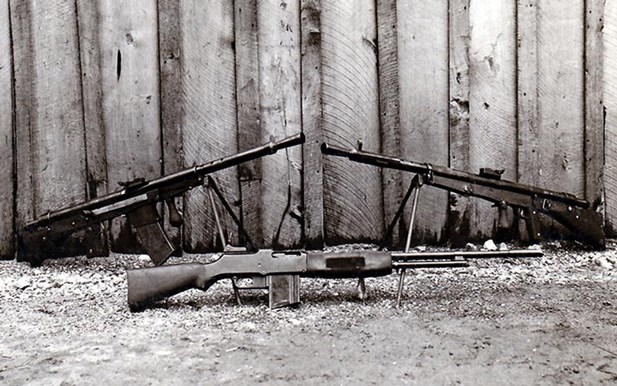
The outstanding Browning Automatic Rifle flanked by the French-built M1915 Chauchat in 8 mm Lebel (right) and the “American M1918 Chauchat” in .30-‘06 (left). Unfortunately for U.S. troops, the BAR did not reach frontline troops until the very end of the war, and the M1918 Chauchat in U.S. .30 cal. was almost completely non-functional.
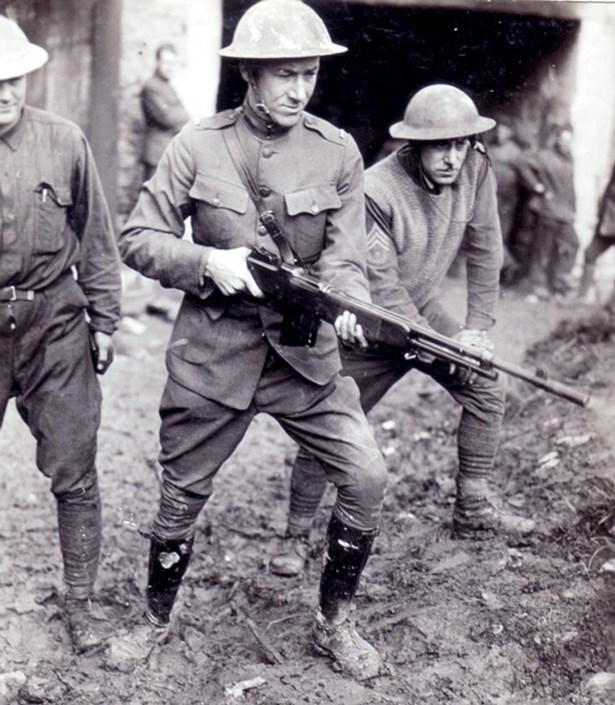
Val Browning tries out a M1918 Browning Automatic Rifle in the “walking fire” style in France during 1918.


Feb. 22, 2022, marked George Washington’s 290th birthday, and nearly three centuries on, there are still many surviving artifacts that give us some insight into his life and character. From extant accounts and records, it’s not much of a stretch to say that Washington, apart from being our nation’s first president, was also a gun guy.
He accumulated many personal arms, from sporting rifles to hunting fowlers to finely finished flintlock pistols. At the time of his death, Washington had approximately 19 pistols, three rifles, four muskets and nine fowling pieces, according to Milton F. Perry, the former curator of the West Point Museum. Of these guns, few survive into the present day as known, documented arms with a chain of custody stretching back to the great man.
Of those existing examples, one pair of pistols is highlighted in the February 2022 issue of American Rifleman in the story by Mark Sage titled “Washington’s Pistols At West Point” starting on p. 50. Another striking pair of flintlock saddle pistols known to have been in Washington’s possession is the one shown here. The “Washington-Lafayette Pistols” are so-called because they were a gift from the Marquis de Lafayette to Washington during the American Revolution.
These guns, which were profiled by Mark Sage in a previous article can be seen at the Fort Ligonier Museum in Ligonier, Pa.
GP100 .44 Special


There’s no denying that semi-automatics pistols rule the roost nowadays.
But this hasn’t always been the case. For nearly two centuries, the sidearm of choice has been the revolver, and for good reason.
Boasting one of the most reliable designs, capable of shooting some of the most powerful handgun cartridges, and deadly accurate, the style of firearm just plain delivers.
And there have been some downright incredible examples of these rock-solid handguns to roll down the pike over the years. With this in mind, here are 7 classic revolvers you’ve got to have, or your gun safe just won’t be complete.
What are some of the most classic revolvers:
- Colt Single Action Army
- Colt Detective Special
- Smith & Wesson Model 19
- Ruger Blackhawk
- Colt Python
- Smith & Wesson Model 29
- Freedom Arms Model 83
Colt Single Action Army
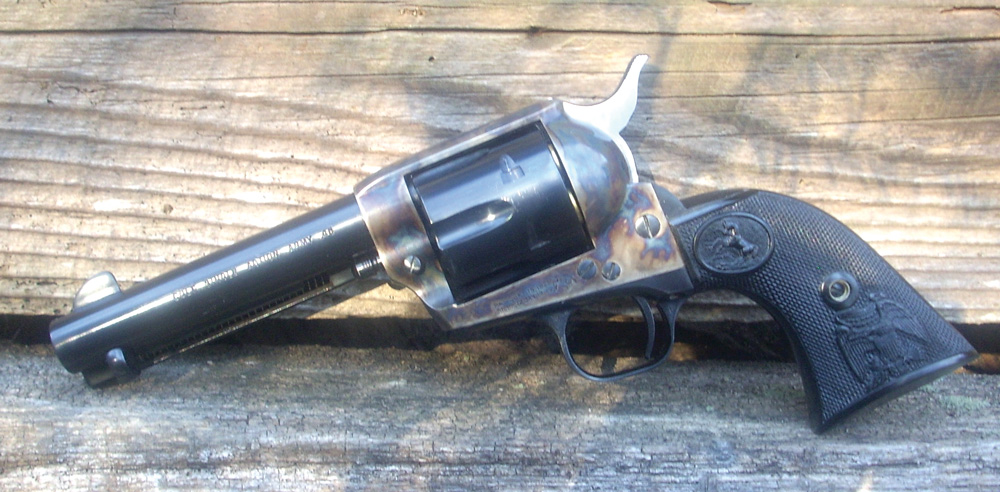
Arguably the king of all handguns, this prince of the prairie helped tame the American West and is still lionized by shooters today. The legendary gun was among the first commercially successful revolvers to utilize metallic cartridges. And when married with the potent .45 Colt, it provided soldiers, lawmen and outlaws enough firepower to get their jobs done.
Today, the SAA lives on as a movie icon, with the likes of John Wayne, Clint Eastwood and Val Klimer all dropping the hammer on the six-shooter. The original historic revolvers, especially those with any providence, can border on the insane when it comes to price. Luckily, Colt still has the Single Action Army running off its assembly line, as does Uberti — true to form and ornery as ever.
Colt Detective Special

Like any tough-as-leather gumshoe will tell you, a solid snubnosed revolver can allot a great deal of peace of mind. And snubbies‘ enduring popularity is due, in part, to this slick little pocket pistol.
The Detective Special made its appearance in the Roaring ‘20s, and like its name suggests, the revolver was intended for carry by plain-clothes officers. But G-Men weren’t the only ones to recognize the advantage of the clandestine .38 Special, with more than one of these Colts making it into the hands of mobsters and bootleggers over the years.
In addition to its petite size, the Detective Special embraces a design point new to revolvers of the time. It was among the first double actions to utilize a swing-out cylinder. As revolver fans know, this tweak made wheelguns that much faster on the reload, a particularly important feature for a defensive arm.
The Detective Special is still popular today, a keen addition to any gun collection. And in a pinch, ready to roar into action.
Smith & Wesson Model 19
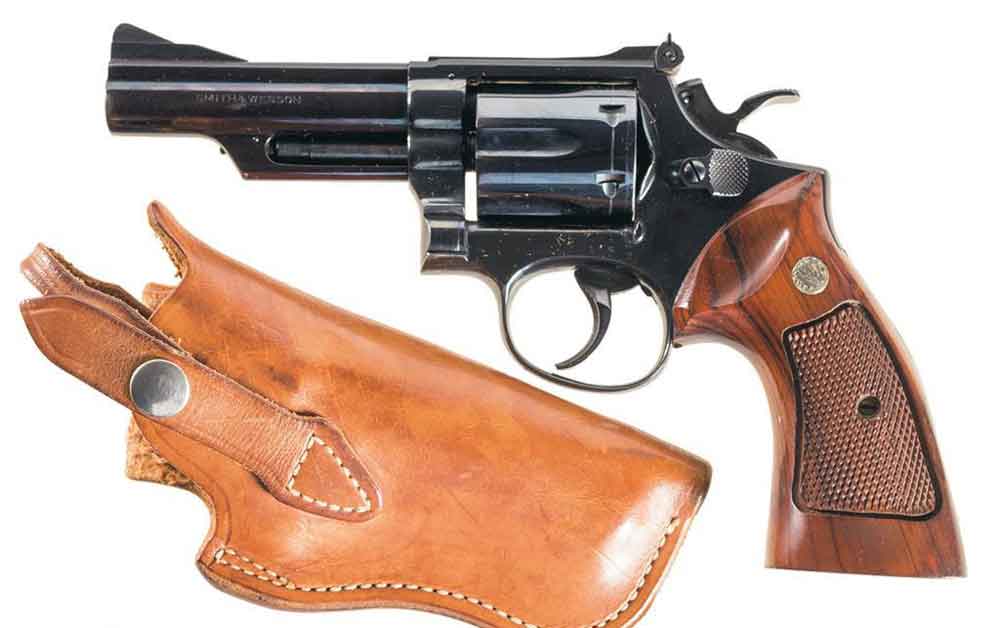
Coming up with a classic doesn’t necessarily mean reinventing the wheel. The Model 19 is a case in point.
In collaboration with a lawman and one of the best marksmen of his day, Bill Jordan, Smith & Wesson married the powerful .357 Magnum cartridge with its trim medium-sized K-Frame. While it required some mechanical and metallurgical tinkering to get right, what resulted was magic
The Model 19 boasted supreme stopping power, yet came in a manageable package. It’s latter point was one of its greatest assets; it could be worn all day without becoming burdensome. No understatement, it became the finest duty revolver of the 20th Century, and an absolute treasure to revolver fans.
Ruger Blackhawk

It’s hard to think how the Single Action Army could be improved, but Ruger found a way to do it. Shooters, in turn, more than responded.
The Blackhawk was and is one of the all-time most popular guns to roll off the company’s assembly line. What made it such a hit, aside from the Western movies of the day, was the single action’s ability to digest magnum rounds. Given America’s love affair with the .357 Magnum in the early 1950s, it made sense the Blackhawk was originally chambered for the round, then soon after the .44 Magnum.
The new models, and there are many of them, are just as fun and rock solid as the Blackhawks that rolled off the line nearly more than 60 years ago. But it’s difficult to argue that there is just something to the old, original “Flattop” models that are the apples of collectors’ eyes.
Colt Python
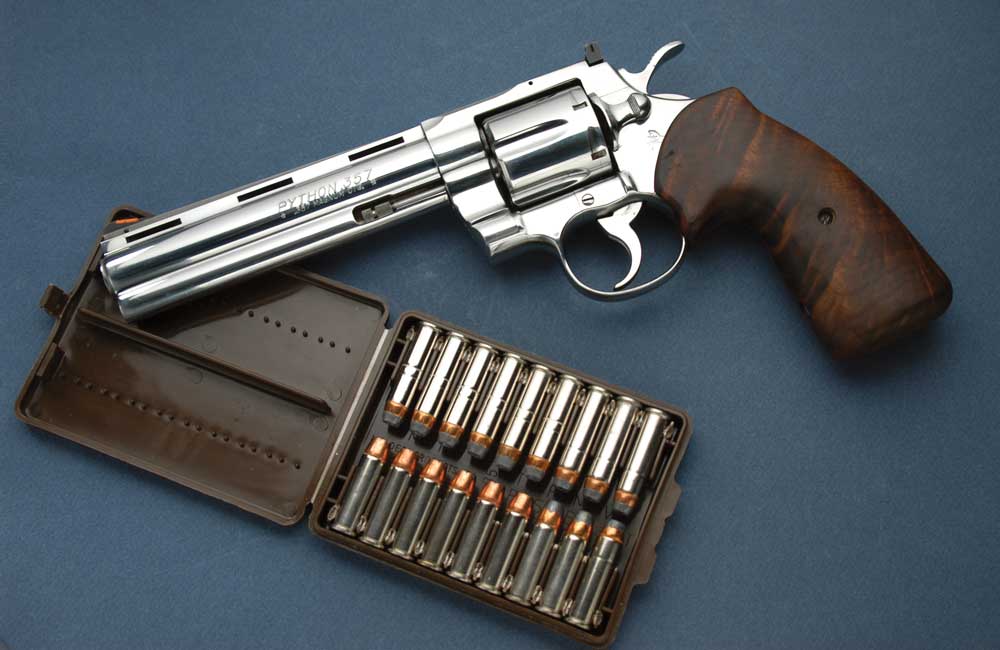
Along with hand-rolled cigars and small-batch whiskey, this revolver is truly one of the finer things in life. The hand fitted and hand polished Python offered shooters an unparalleled experience behind the trigger, and head-turning looks that seldom come down the pike.
To the latter point, the .357 Magnum is unmistakable in silhouette, boasting a vented rib and a full-length underlug running on a bull. But the Python offered more than serpentine good-looks; it also performed. The revolver could beat the snot out of the bullseye, aided by superior hand fit, a trigger pull as smooth a glass and a cylinder locking mechanism that milked every bit of accuracy out of each cartridge. It is no wonder gun writers and handgun enthusiasts in general consider the Python among the best mass-produced revolvers of all time.
Smith & Wesson Model 29

The revolver that makes anyone’s day, shooters have had an up-and-down relationship with the .44 Magnum. Popularized by Clint Eastwood’s use of it in the “Dirty Harry” movies, the Model 29 was for a time the must-have revolver.
But similar to when it was originally introduced in the 1950s, there were plenty of barely-shot 29s returned to gun stores around the country. While shootable for caliber, the Smith & Wesson N-frame still packed more punch than the general shooting public was willing to endure.
The emerging niche of handgun hunting in the 1970s kept the large-bore revolver relevant, given, short of a blue whale, it could perforate and permanently put down nearly any beasty on God’s green earth. And it is still among the top choices of handgun hunters today, especially those with a yen for the classics.
Freedom Arms Model 83

Finely built, with power to spare, this single-action monster is just the ticket for tackling any game North America can throw at you.
The first commercially revolver offered in .454 Casull, the Model 83 gained notoriety for more than its ability to pitch one of the most potent rounds on the planet. The wheelgun was also one of the most meticulously engineered firearms to hit the market, despite its old-timey look. One such example is Freedom Arms line boring the cylinder, a process rarely seen outside custom shops and which ensures absolutely dead-on bore-to-chamber alignment.
Despite its premium price, the Model 83 has grown in popularity with the upsurge of handgun hunting, and it is now available in a slew of game-stopping calibers from .357 Magnum to .500 Wyoming Express. Freedom Arms has even kept the recoil-sensitive, yet performance-driven shooters in mind, offering the legendary Model 83 in .22 LR.
